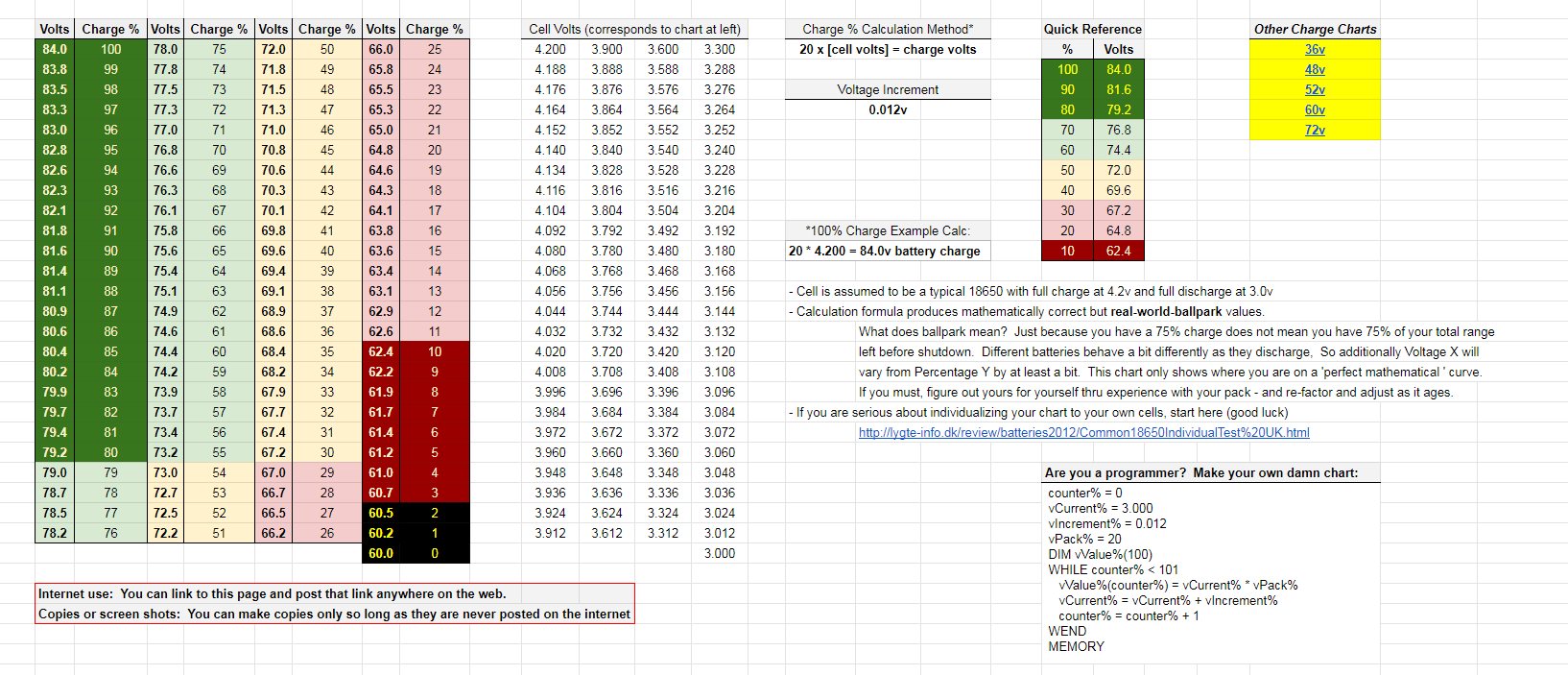Sorry but for some reason can’t open the link. That said I think I’ve seen similar charts but still have the same question - which is - “what is meant by ‘usable volts’ and/or how is this value calculated? Thx
Just tried the link and it works, as do the chart links. Probably the most-visited page on my site so if it had gone bad I'd hear about it

Usable volts: This is pretty straightforward but I can understand how its not particularly intuitive to determine. First of all, your ebike's controller has what is known as a "low voltage cutoff" (LVC) which is the point where your controller says your battery has been drained too far to operate the controller, and so it shuts off and you either pedal unpowered, or you walk the bike.
Lets say that LVC is set to 42v, If you were using 42v as your drop-dead cutoff, and your battery is a 52v pack with the standard 58.8v max charge, then you simply subtract 58.8-42=16.8 usable volts. The plot thickens some, though. Your battery also has its own LVC built into the Battery Management System (BMS) that is built into the pack. What is that cutoff? Good question. It is probably a little more than the controller. Oh and your display may in fact also have its own cutoff setting. My KT displays have a setting that will increase or decrease the LVC in increments of 0.5v to better suit your personal preference - draining a pack down to 0% usable charge is bad for it so you might want to increase your LVC a bit.
So how did I calculate the usable voltage on the charts? As noted in the post above, for a 52v pack I certainly didn't come up with 16.8 usable volts. I came up with 15.8, and that is because the scale for calculating a 14S (52v) pack bottoms out (0.0%) at 43.0v. This is still a 6% charge on cells that have the typical individual cell range of 4.2v down to 3.0v. BUT If you drain a pack down to 0% charge you may well have killed it, which is part of why you don't want to trust an LVC on a controller (don't drain the freaking pack down so hard so you can not worry about these settings).
Clear as mud? It will be a LOT clearer if you can see the charts, where I showed all my work, all the steps as well as the corresponding cell values so you can visually do the math yourself and understand the whole process just by looking at the chart.
NOTE: I am totally ignoring the effect of voltage sag, which will cause a pack to drain down below its actual level by a volt or so, and make that LVC of 42.0 viable and not damaging to the pack. Understanding voltage sag isn't necessary to answer your fundamental question so I'm skipping that part.

